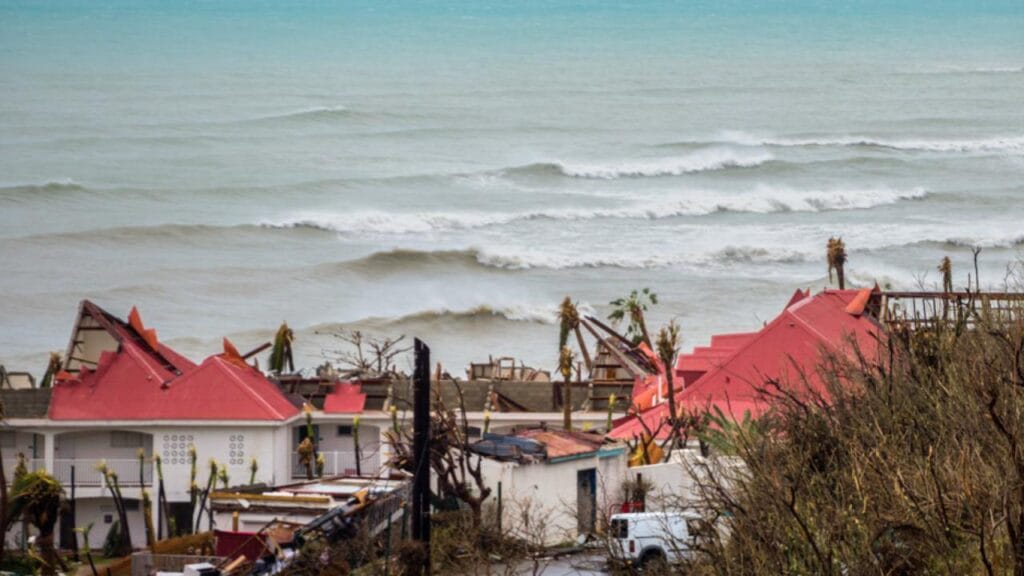Scientists warn sea levels are accelerating beyond predictions, and it’s no longer a distant threat—it’s a present-day reality. From Miami’s flooded streets to disappearing islands in the Pacific, the signs are everywhere. New satellite data and field studies are now confirming what many feared: sea level rise is speeding up faster than most climate models projected, and it could affect millions sooner than expected.

You don’t need to be a climate scientist to care about this. Rising sea levels impact real lives—displacing communities, flooding homes, wrecking crops, and stressing already stretched city budgets. It’s time we talk about what’s happening, why it’s happening faster than we thought, and what we can do about it.
Sea Levels Are Accelerating Beyond Predictions
| Topic | Details |
|---|---|
| Global Sea Level Rise (2024) | Increased by 0.59 cm—above the projected 0.43 cm |
| Primary Drivers | Melting ice sheets in Greenland and Antarctica, thermal expansion of oceans |
| Future Risk Zones | Coastal cities like New York, Miami, Jakarta, Dhaka, and island nations like Tuvalu and Maldives |
| Long-Term Projections | 1.5 to 3.5 feet (0.5–1.1 meters) rise by 2100, displacing 200M+ people worldwide |
| Climate Limit Relevance | Even limiting warming to 1.5°C won’t stop significant sea rise |
| Adaptation Measures Needed | Seawalls, flood defenses, managed retreat, better urban planning |
Scientists are sounding the alarm: sea levels are rising faster than we predicted, and the risks are growing every year. From Florida’s coastlines to Pacific island nations, the impacts are real and accelerating. But this isn’t a doomsday prophecy—it’s a call to action.
With smart planning, bold policy, and everyday changes from people like you, we can adapt, protect communities, and slow the climb. Because the ocean may be rising, but so can we.
Why Sea Levels Are Rising Faster Than Expected
There are two major causes of sea level rise—and both are speeding up:
1. Melting Polar Ice
Satellite imagery from NASA shows Greenland and Antarctica are losing ice mass at alarming rates. Greenland alone lost around 270 billion tons of ice per year from 2002 to 2021. Antarctica isn’t far behind.
Why it matters: That ice turns into water and flows straight into our oceans.
2. Thermal Expansion
Warmer water expands. As the planet heats up due to greenhouse gas emissions, oceans absorb about 90% of the heat. Warmer water = more volume = higher seas.
These combined effects mean that current sea level rise is no longer linear—it’s going exponential.
“The ocean doesn’t lie,” said Dr. Josh Willis, oceanographer at NASA’s Jet Propulsion Lab. “We’re seeing the water rise in real time.”
Real-World Impact—What It Means for People Like You
Sea level rise isn’t just a faraway problem. In the U.S. and across the globe, millions are already being affected. Here’s how:
1. Coastal Flooding
Think of sunny-day flooding in Florida. In places like Miami and Charleston, streets flood during high tide, even without storms.
2. Storm Surges Get Worse
Higher sea levels make storm surges more destructive. Hurricane Sandy in 2012? Sea level rise added about 8 inches to the storm surge. That meant more flooding, more damage, more lives lost.
3. Saltwater Intrusion
Rising seas push saltwater into freshwater supplies. Farmers near coastlines are seeing crops fail due to salty soil. Communities are losing clean drinking water.
4. Property Values Are Dropping
Homes in high-risk flood zones are becoming harder to sell and insure. Some U.S. homeowners have already seen their property values shrink due to repeat flooding.
5. Climate Migration
The World Bank estimates over 200 million people may need to move due to climate change by 2050—much of that linked to sea level rise.
A Guide to Understanding and Acting on Sea Level Rise
- Know If You’re at Risk: Use tools like:
- NOAA’s Sea Level Rise Viewer
- FEMA Flood Maps
- Protect Your Property:
- Elevate homes and HVAC systems
- Install sump pumps and flood vents
- Use permeable landscaping to reduce runoff
- Advocate for Community Resilience:
- Push local leaders to invest in green infrastructure (like wetlands)
- Support zoning laws that prevent overdevelopment in flood zones
- Demand action on climate and disaster readiness
- Cut Your Carbon Footprint: Every ton of CO₂ saved helps slow the ocean’s heating. Start with:
- Driving less or switching to EVs
- Upgrading to energy-efficient appliances
- Voting for climate-smart policies
- Stay Informed:
- Bookmark NASA Climate
- Follow IPCC Reports
- Join local climate or coastal resilience groups
FAQs On Sea Levels Are Accelerating Beyond Predictions
Q: Is it too late to stop sea level rise?
A: No, but we can’t reverse it overnight. Even if we hit net-zero emissions today, sea levels will keep rising for decades due to momentum already built into the climate system.
Q: How much will sea levels rise by 2100?
A: Estimates vary, but most fall between 1.5 to 3.5 feet (0.5 to 1.1 meters). Worst-case scenarios suggest up to 6 feet in parts of the world.
Q: Will sea levels rise everywhere equally?
A: No. Local factors like currents, land elevation, and subsidence mean some areas (like the Gulf Coast or Southeast Asia) will see higher rises than others.
Q: What’s “managed retreat”?
A: It means moving communities inland—sometimes permanently—when protection becomes too expensive or impossible.
Q: Is the U.S. doing anything about it?
A: Some cities are stepping up—like New York’s East Side Coastal Resiliency Project and Louisiana’s coastal restoration—but we need faster, national-level action.
Resources for Professionals and the Curious
Whether you’re a policymaker, business owner, or curious teen, here’s where to learn more:
- NASA Sea Level Portal
- U.S. Climate Resilience Toolkit
- NOAA Office for Coastal Management
- IPCC Sixth Assessment Report








